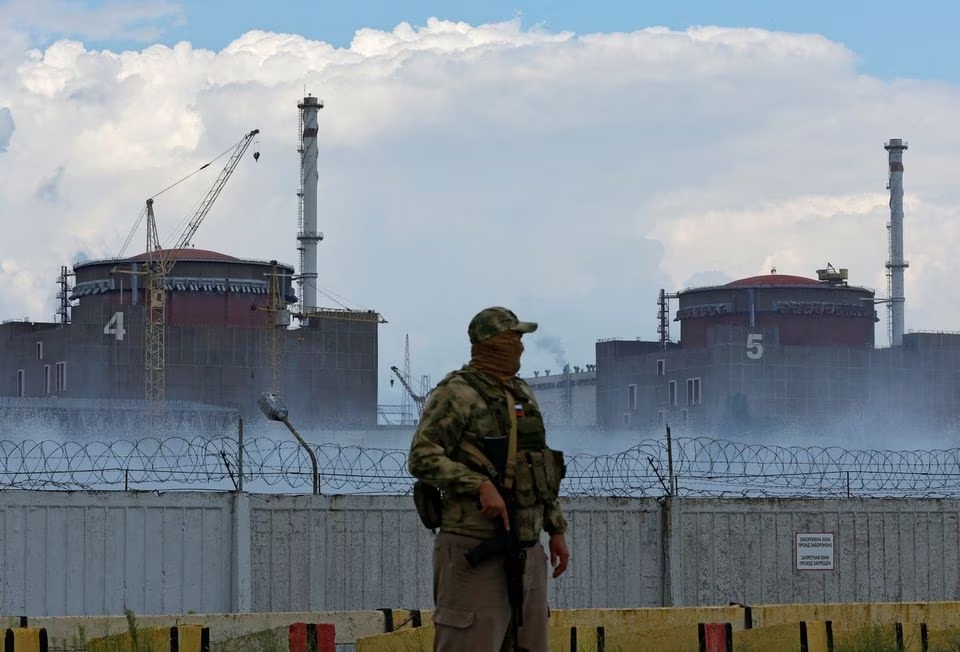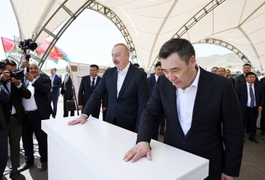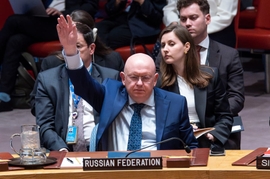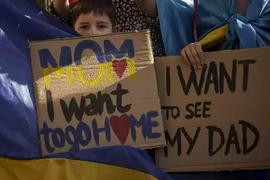Ukrainian President Volodymyr Zelensky warned that Russia is allegedly planning a terrorist attack involving radiation leakage at the Zaporizhzhia nuclear power plant (NPP) in southeastern Ukraine.
He issued the warning on Thursday, citing intelligence received from Ukraine’s Security Service.
“Intelligence has received information that Russia is considering a scenario of a terrorist attack on the Zaporizhzhia nuclear power plant,” President Zelensky wrote on Twitter. “A terrorist attack with radiation leakage. They have prepared everything for this.”
Ukraine’s leader emphasized that radiation does not respect borders and its impact depends solely on the wind direction. He further asserted that Kyiv is sharing all available information with its global partners, including Europe, America, China, Brazil, India, the Arab world, Africa, international organizations, and all nations.
“There should never be any terrorist attacks on nuclear power plants anywhere. This time it should not be like with Kakhovka – the world has been warned, so the world can and must act,” President Zelensky added.
He further accused Russia of using the Zaporizhzhia nuclear power plant (NPP) as part of its aggressive tactics. According to him, Russia is using the occupied facility as cover for shelling neighboring cities. Additionally, weapons and troops are reportedly stationed at the plant.
The Zaporizhzhia NPP, Europe’s largest nuclear power plant and one of the top ten globally, began operating in 1985. It generated approximately 6,000 MW, accounting for about half of Ukraine’s nuclear power and contributing to one-fifth of the country’s total annual power output, which reached 149 billion kWh in 2020.
By April, as part of a “special military operation” initiated on February 24, 2022, the Russian armed forces had gained control of several key locations in Ukraine. These included the Zaporizhzhia NPP along with the decommissioned Chernobyl nuclear plant and the surrounding exclusion zone in northern Ukraine, situated close to the Belarus border and merely 132 kilometers away from Kyiv.
Both Russia and Ukraine have accused each other of targeting the complex. The Zaporizhzhia NPP houses Soviet-designed VVER-1000 V-320 water-cooled and water-moderated reactors containing Uranium 235, which has a half-life of over 700 million years. Both sides have expressed concerns about the potential for a nuclear disaster. Presently, all six reactors are in cold shutdown, with reactor No. 6 specifically shut down due to the risk of damage during the conflict.
During a cold shutdown, the reactor’s temperature remains below the boiling point, while the electrical pumps circulating water through the reactor core must continue functioning to cool the fuel. Although the plant is no longer generating electricity, the primary concern lies in the possibility of nuclear fuel overheating if the power supply to the cooling systems were to be interrupted.
The International Atomic Energy Agency (IAEA), the UN’s nuclear watchdog, has repeatedly expressed concerns about the shelling of the plant. In early May, IAEA officials issued warnings stating that the situation at the plant had become “increasingly unpredictable and potentially dangerous” due to the frequent shelling in the vicinity, heightening the risk of a nuclear accident.







 President Ilham Aliyev shed light on the evolving contours of the peace process with Armenia during an international conference in Baku this week. ...
President Ilham Aliyev shed light on the evolving contours of the peace process with Armenia during an international conference in Baku this week. ...
 Azerbaijan and Armenia started the process of demarcation of their border on Tuesday, with the installation of the first border markers based on ge...
Azerbaijan and Armenia started the process of demarcation of their border on Tuesday, with the installation of the first border markers based on ge...
 Iranian President Ebrahim Raisi expressed Tehran’s readiness to participate in significant development projects in Sri Lanka during the inauguratio...
Iranian President Ebrahim Raisi expressed Tehran’s readiness to participate in significant development projects in Sri Lanka during the inauguratio...
 Iran and Pakistan have signed eight cooperation documents in various fields, and agreed to strengthen ties to fight terrorism in the region.
Iran and Pakistan have signed eight cooperation documents in various fields, and agreed to strengthen ties to fight terrorism in the region.
 As the conflict between Ukraine and Russia escalates, the strategic importance of Kharkiv, Ukraine's second-largest city, has come sharply into focus.
As the conflict between Ukraine and Russia escalates, the strategic importance of Kharkiv, Ukraine's second-largest city, has come sharply into focus.



